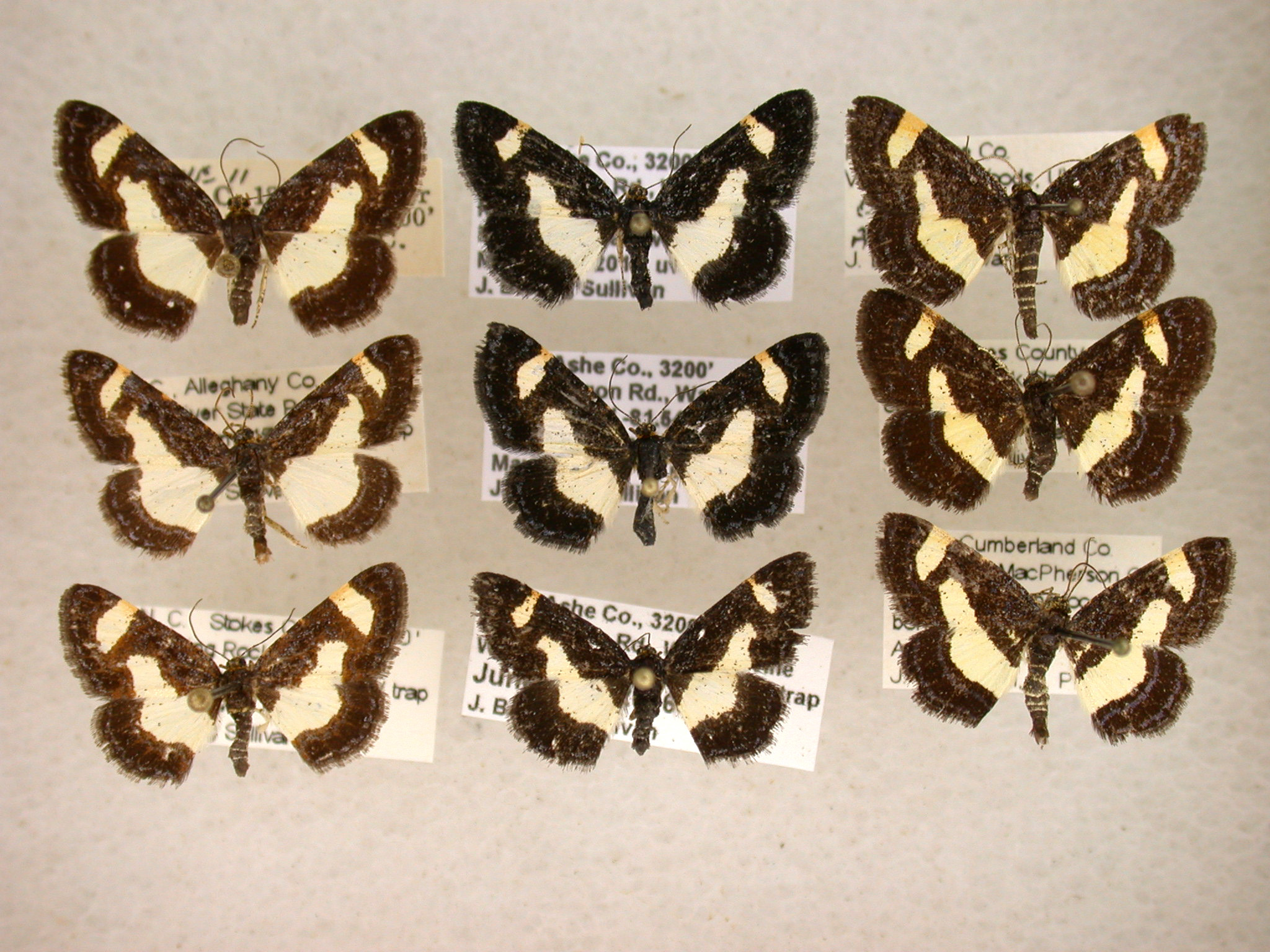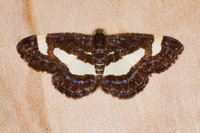
view caption
Live Oak Methodist Church Rd., 2014-May-3, Nathan Howell. Photographed on Robinia nana, the larval host plant | 
view caption
Specimens and photographs from J.B. Sullivan. Left Column: Heliomata cycladata: June 11, 1974, Alleghany Co., female; June 1-4, 2000, New River State Park, Alleghany Co., male; May 7, 1997, Hanging Rock State Park, Stokes Co., female. Middle Column: Heliomata cycladata: May 30-31, 2019, Ashe Co., female; May 30-31, 2019, Ashe Co., female; June 9-15, 2016, Ashe Co., female. Right Column: Heliomata infulata: April 24, 2001, Weymouth Woods Natural Area, Moore Co., male; May 6, 1997, Hanging Rock State Park, Stokes Co., female; April 24, 2001, Ft. Bragg, MacPherson Ck., Cumberland Co., male. |  |

 »
»



 »
»

